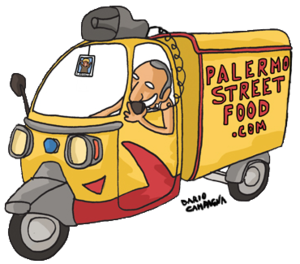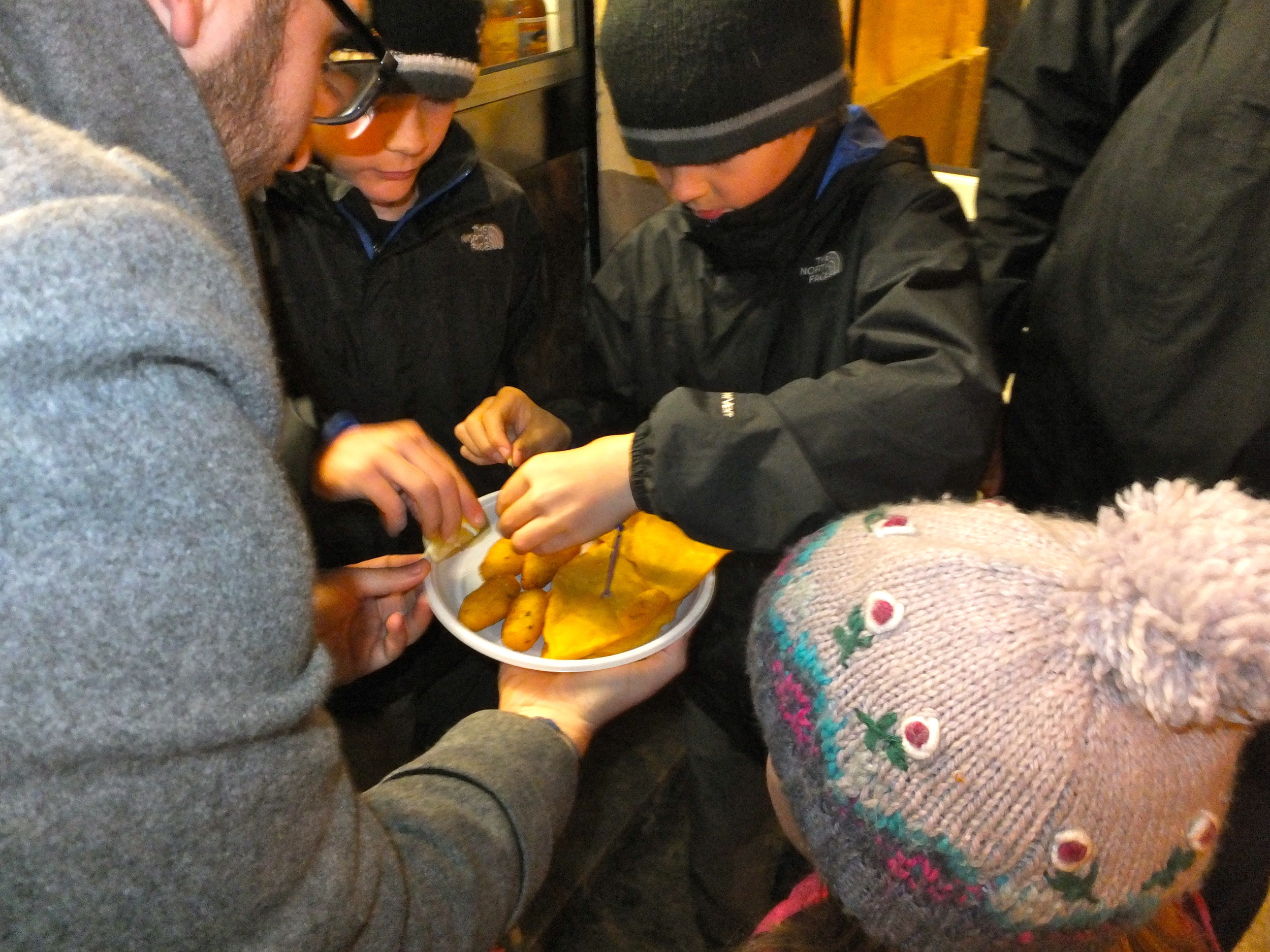During one of our most recent tours, Salvatore had the pleasure of introducing a wonderful family from Seattle to the street food traditions of Palermo. This family was traveling around the world. We would not call them tourists, the term "travel adventurers" is defiantly more appropriate! The family: Mom, Dad, Massimo and Enrico (both 8 years old), and Bianca (5 years old). It's not strange that the kids have Italian names, they are an Italo-American family.
The mother, Colleen, asked Palermo Street Food to prepare a tour that would be interesting for kids, and, in the words of Salvatore "what could be more interesting to kids that a nice story about kings, pirates and travels?" Actually, Sicilian history is a perfect mix of events and adventures and every street food specialty offers the opportunity to create a fun trip throughout the past centuries and Palermo's history! Palermo, history through food!
What made this tour special was without a doubt the awesome kids. Little Bianca even tried Pani ca meusa and she loved it!! Enrico also enjoyed our food and him and his dad shared a nice big focaccia! Mom and Massimo were a little bit skeptical, but when we arrived at panelle e crochette everybody was happy and they had a big dish! For sure everyone loved arancina and the tour ended with an epic brioche con gelato al pistachio.
Everyone enjoyed Palermo: its food, its streets and its stories! To quote Salvatore, "what a gift to spend the afternoon with these great people." Salvatore was so happy to know that the kids were having a nice opportunity, learning from the direct experience of life without judgment and prejudices. Really a nice family and what a great way to live life: around the world!






